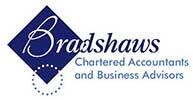Government seeks views on inheritance tax changes for trusts
The government has opened a consultation on aspects of the application of the £1m allowance for property settled into trust qualifying for 100% agricultural property relief or business property relief. What is this looking at and how do you take part?

As announced at the 2024 Autumn Budget, a new £1m allowance will apply to the combined value of property that qualifies for 100% business property relief or agricultural property relief from inheritance tax. The value of the estate exceeding the allowance will be subject to relief at a lower rate of 50%. A consultation has now been launched which outlines how the £1m allowance will operate in respect of both existing trusts and trusts yet to be formed. As with any major change to the tax rules involving trusts, the transition is complicated, and the consultation asks whether the rules on application are sufficiently clear, as well as requesting views on other matters. Have your say here by 23 April 2025.
The consultation also revealed key information for individuals - it is confirmed that the £1m allowance refreshes every seven years (as the nil rate band does), and transfers made prior to 30 October 2024 (Budget Day) will not use up any of the £1m allowance.
Related Topics
-
HMRC checks directors’ loans are paid up
HMRC is writing to agents to check corporation tax returns for previous years are correct as it used to be possible to add a future date for an anticipated loan repayment. What’s the issue and what should you do if your advisor receives a letter?
-
Government quietly confirms change to key tax deduction
The headlines for individuals at last week's Budget were all about the income tax hikes. But the small print contained confirmation of another important change. What’s the full story?
-
MONTHLY FOCUS: UNDERSTANDING FURTHER CONCEPTS WITH IR35
A focus taking a deeper look at the practical aspects of IR35. This month, we look at dealing with HMRC, the tax and NI regulations, and the IR35 calculations.

 This website uses both its own and third-party cookies to analyze our services and navigation on our website in order to improve its contents (analytical purposes: measure visits and sources of web traffic). The legal basis is the consent of the user, except in the case of basic cookies, which are essential to navigate this website.
This website uses both its own and third-party cookies to analyze our services and navigation on our website in order to improve its contents (analytical purposes: measure visits and sources of web traffic). The legal basis is the consent of the user, except in the case of basic cookies, which are essential to navigate this website.